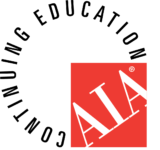Acoustic Door Assemblies and Their Role in Sound Control
Course ID: 0920023087
Credit: 1 Hour LU HSW
Class Description: Sound control is a critical element to a building’s design. How an occupant will use the space must be understood in order to deliver a healthy and functional environment free of noise. Is speech privacy important? Is this a learning environment? Does the office open to a manufacturing floor?
We all think of the walls, ceiling, and floor when discussing sound attenuation. But we must not overlook the importance of an acoustic-door assembly. Without the proper acoustic door, the sound-control goals in an acoustic plan may not be met.
This course will review healthy sound levels and how to test and identify target STC ratings. We’ll discuss the elements of the acoustic-door assembly and how the assembly addresses fire-ratings and ADA compliance, contributes to LEED certification and green building, and provides security for classified files and electronic data.
Specialty Doors for Healthcare Design
Course ID: AMB019
Credit: 1 Hour LU HSW
Class Description:
- state the attributes of a specialty door and frame assembly in healthcare facilities and summarize the benefits of using stainless steel doors and frames in healthcare design
- list the key components of acoustic doors and how they meet LEED®v4 requirements
- define the need and role of specialty assemblies designed for security in healthcare facilities
Commercial Steel Doors in Resilient Design
Course ID: AMBO16-01
Credit: 1.5 Hour LU HSW
Class Description:
- define some of the principles and strategies of resilient design
- contrast the performance of steel doors versus alternative materials
- state the green features of steel and explain why it is a sustainable material that is ideally suited for resilient design applications
- explain how steel doors can be utilized in a resilient design strategy for applications requiring resistance to blasts, tornadoes, or bullets
- discuss the standards and tests related to the various types of specialty steel doors
Accessibility in Toilet Room Design
Course Code: ASI-ATRD21
Credit: 1.0 hour LU HSW
Class Description: Millions of Americans live with impairments that substantially limit major life activities. The Americans with Disabilities Act (ADA) guarantees that people with disabilities have the same opportunities as everyone else to participate in mainstream living by mandating that public facilities and services be fully accessible to people with disabilities. This course examines the accessible elements of a multiuser toilet room. Discussed are toilet room compliance with applicable accessibility codes and regulations relating to access, use, maneuverability, and safety, and accessible design issues associated with toilet compartment and lavatory accessories.
Learning Objectives:
- Discuss the need for universal design, the seven universal design principles, and the role of the ADA in the development of accessibility guidelines and standards.
- Explain ADA regulations surrounding toilet room access, use, maneuverability, and safety and how they ensure a satisfactory experience for users of all abilities.
- Explain ADA regulations for toilet compartments, lavatories, and accessories that support ease of use and the welfare and safety of all users.
- Identify the conflicting accessible design requirements between the 2010 ADA Standards and ICC/ANSI A117.1-2017 concerning clear floor space, grab bars, and dispensers.
Click below for more information:
- Online through AEC Daily
Designing for Education K-12
Course Code: ASI (to follow soon)
Credit: 1.0 hour LU HSW
Class Description: Focus on the evolving needs in education washroom facilities, materiality resilience and the user experience.
Code Compliance without Sacrificing Design
Course Code: FRCC0123
Credit: 1 AIA CEU HSW
Class Description: Examines commercial door hardware function, code requirement and customizable criteria for security and safety.
Introduction to Entrance Flooring
Course Code: NYS07C
Credit: 1 AIA CEU HSW
Class Description: This course will explain the functions and benefits of a well-designed entrance system and will provide application dependent guidelines that will aide in proper system design. This one-hour course will discuss the value and benefit of an entrance flooring system. Industry standards, including ADA requirements and United States Green Building Council (USGBC) LEED credits and how they each pertain to entrance flooring systems. The product option section provides an overview of the wide range of mat and grilles available to best fit the needs of your project. We will also address design considerations when describing the primary factors that impact the design and selection of an entrance system. And finally, the the application section reviews common applications, and names system recommendations based on predetermined design factors.
Click here for information regarding Nystrom Architect + Specification Services
Lighting the Path: Building Egress Safety
Course Code: NYS10D
Credit: 1 AIA CEU HSW
Class Description: This one-hour course examines the need for photoluminescent lighting systems in stairways of buildings across the country to provide a safety pathway of exit during emergencies. The idea of finding a way to illuminate a safe path for building occupants has been tossed around for decades, but the main obstacle encountered in the past has been the way to do so consistently without electricity. So, the evolution of photoluminescent egress lighting will be discussed as well as new advances in technology that now permit occupants to find a safe route even without electricity. Current code and testing methods will be reviewed that now mandate the implementation of photoluminescent systems that not only light the way but also provide information about the building int terms of location and items that may be used in cases of emergencies. The types of luminescent products will be presented as well as the benefits of using photoluminescent products inside buildings to better protect building occupants.
Managing Building Movement with Joints
Course Code: NYS07A
Credit: 1 AIA CEU HSW
Class Description: Understanding building movement joints, forces, joint types, filler and cover options is an integral necessity. Using this information will help assure that designs and specifications will achieve the desired success and prevent the deterioration that would otherwise occur in a building from movement.
One Step At A Time: Safety and Sustainability
Course Code:
Credit: 1 AIA CEU HSW
Class Description: This one-hour course examines how stair treads and nosings improve building safety. This course also presents new innovations such as sustainable materials, easy-maintenance and replacement options for job-site labor and cost-savings. Current code, applications and installation methods will also be examined during this AIA/HSW accredited presentation.
Security Pass Through Combinations
Course Code: to follow
Credit: 1 LU HSW
Class Description: The course will instruct upon the varying levels of bullet resistant protection, anti-theft, as well as various window tints, shades and security levels.
Heavy-Duty Flush Doors for Commercial Entrances
Course Code: FRP-101
Credit: 1 AIA CEU
Class Description: Dive into what makes a functioning entrance. Then, learn how to evaluate design, construction and durability, environmental considerations, and performance to choose the right door supplier for your budget.
Exterior Doors for Performance and Sustainability
Course Code: FRP-201
Credit: 1 AIA CEU
Class Description: Understand how sustainability goals and high performance can work together when evaluating commercial doors.
Specifying Doors for Corrosive Environments
Course Code: FRP-301
Credit: 1 AIA CEU
Class Description: Review what causes various types of corrosion in commercial environments, how to counter them, and how to specify a door for corrosion resistance.
Entrances: The Science Behind the Door
Course Code: FRP-401
Credit: 1 AIA CEU
Class Description: Learn the fundamentals of fiberglass, including its history and benefits, and the materials and methods used to manufacture doors and frames with different textures and finishes to withstand fire, corrosion, and abuse.






